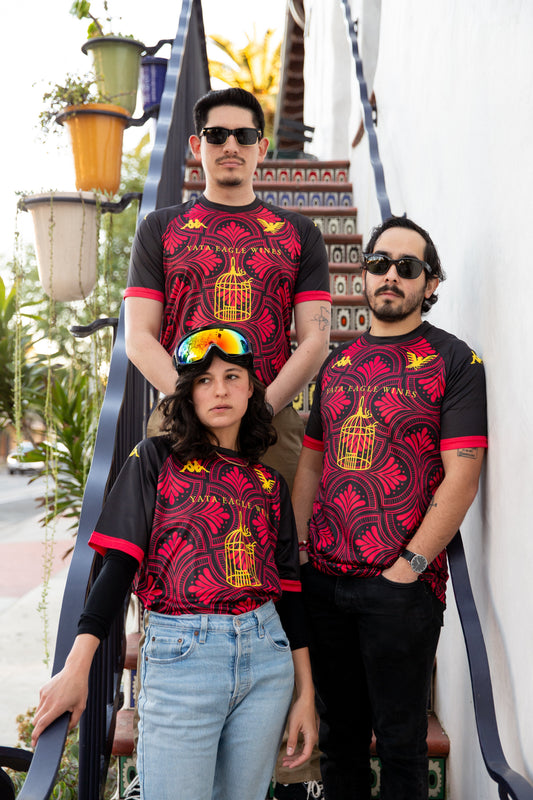
Life seen in architecture
Share
If you’ve seen the show, Atlanta, you’d be quickly enamored with Darius (played by LaKeith Stanfield). His antics, unconventional thought process, and imagination brings out the respect and jealousy from us towards him. In the pilot episode, when Darius and Paper Boi are picking up Earn (Donald Glover) from his house, Darius asks Earn’s father if he can measure the tree that is in the front yard with absolutely no context leading up to it. The father looks confused and says “no, not right now”. Darius then throws a tiny hissy fit and grunts “man, that basically means no”.

How many of you would like to measure the things you know you can’t measure? Haven’t you ever wanted to measure how much you love someone? Didn’t you used to want to measure how far the moon is? Or what about the right amount of saffron to use to make that yellow sauce you always wanted to make with bell peppers and pears as a base?

What about heartbreaks? Wouldn’t it be easier to know what needs to be done if you could quantify and measure the severity of heartbreaks? Damage to the inner childhood trauma of 50 degrees? Sweet, I’ll just put in 50 degrees of effort and activities that heals that and lets me start trusting again. Feelings are important in what we want to measure.

I’ve come out of bars after Irish Goodbye-ing the lot, riding my bicycle home on the avenues lit with the string lights that hug dearly to the buildings and trees, imitating vines of the jungles. It isn’t the lights that soothe me, it is the corners of the buildings that envelope me, hugging me closely while I process the present and the emotions.

Yet the buildings that do so are not necessarily my aesthetic style nor are they necessarily designed with aesthetics in mind or love. But they still exist. Architecture with and without aesthetics. Architecture with and without love. You could flip it around and say there is aesthetics with and without love or even love with and without architecture. This leads into the “poincon ◊” definition that Lacan brought into his Graphs of desire. The symbol “◊” defines the subject to be less than and more than the object. Not exactly a “≠” but it gives the subject the unlimited freedom on how it relates to the object.
Architecture ◊ Love
We’ve failed this fantasy that architecture is an all-encompassing practical art. Limits are defined by economics, politics, land ownership, and honestly, people working together. Failed so much so that it gives us a lot to write about architecture. E-Flux, an art journal, even has a whole section of its publications dedicated to Architecture with essays about nuclear reactivity (link here), about food access (link here), about public healthcare (link here), and reparations (link here).

But these essays were written in the name of love. In the hopes that we learn from words we speak to each other, in the hopes that the next sip of the wine from your glass tastes differently with these sets of new knowledge. Architecture isn’t love but it has a deeply complex relationship with love. With networks of string lights that enchant us, with shadows that remind us what we are and what we aren’t, with windows that open up and we glimpse inside the context of our desires and balancing that with the desires of the social.

Some of us want affordable housing. Some of us want to end single family zones. Some of us want to create a monument of a building in the center. Some of us want to create 15-minute cities (link here). But it’s not going to work just as it is. In the name of Love isn’t enough. We’ve seen how love isn’t enough and it’s exactly why the poincon is appropriate for the relationship between Architecture and Love. Love can’t intersect the dimensions that architecture holds.

If Love isn’t going to save Architecture, then what will? This question is only relevant if we think Architecture needs saving. As long as we are in the thought process that yes, architecture needs saving, what are we supposed to do? What manifesto do we follow? What can we do? How do we measure our efforts and successes to know it’s working? I think we can’t answer that yet. But we can start somewhere. And this is where we start.
Feminism
If we take the qualities out of Hegel’s Philosophy of Right and Phenomenology of Spirit and apply the “contradictions” of the question of women embodiment of qualities in a patriarchal universe, we quickly see that the contradiction of ideals set upon the feminist question by society at large really isn’t a contradiction but rather an opposition. An opposition that shows that there is no such thing as a contradictory woman, alike the status that there isn’t a contradictory person. Yet to overcome this, there is a necessity for reason to come to terms with the absolute. This absolute isn’t what we have reached yet as reason or Vernunft (link here) as long as the course of history isn’t willing to rework itself. Shout out to the essay we published earlier this month (Act 1: In the name of Love, Black History Month) for we briefly mentioned the concept of the end of history.

There is a meme out there saying that “Humans are just the reproductive organs for memes”. Which isn’t too far off from the concept of Reason trying to actualize itself using humans as the “reproductive organs” when humans use activities to pursue their own will.

And once again, to repeat the message from the first Act, we say this: love what is here but rage against the boundaries that limit us. It is no use to rage within the boundaries and rehash the events that circulate and rescript itself whenever we think we’re pushing the boundaries when in actuality we are just bouncing off the boundaries.

Architecture and Feminism does face its problems in the contradictions that it tries to resolve. Yet we seemingly forget the theories necessary to overcome this and to learn and act upon its failures and successes. These theories are like food we eat, the architecture that holds us while we replenish our soul and body. How we eat and when we eat will be important going forward.

To finish this essay with another quote from Darius (Atlanta), it is from the scene from the finale when Darius goes into his sick (or possibly dead?) brother to drop off medications for him and when offered jollof by his brother, Darius initially says no, that he has to go to this dinner thing with his friends. Darius looks gently at his brother while the brother says yes, "you should go out and live a life". Not overcome with guilt, but rather love, Darius then says:
"I'll take half a bowl of Jollof"
Darius (Atlanta, finale)
The following are example of architectural works by women









